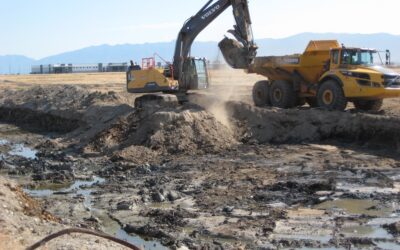When liquid passes through trash material, such as in a landfill, “leachate” is generated. Rainwater is the largest contributing factor of leachate, but natural decomposition and discarded chemicals also contribute. While restrictions are in place to avoid hazardous chemicals from being deposited into landfills, leachate can still contain unfavorable components. It often contains high levels of nitrogen, iron, organic carbon, manganese, chloride and phenols.
If left untreated, leachate can be considered a problem due to its negative effects on the environment. If the landfill contains toxic chemicals,these chemicals can seep into the ground and cause harm to the ecosystem. The absorption of this liquid can contaminate the soil and put our drinking water risk.
In order to keep leachate from posing any threats to the environment, landfills rely on impermeable liners, specialized filters and drains to collect the runoff so it can be cleaned and processed, removing all harmful chemicals.
Stay tuned for more information on leachate treatment.


